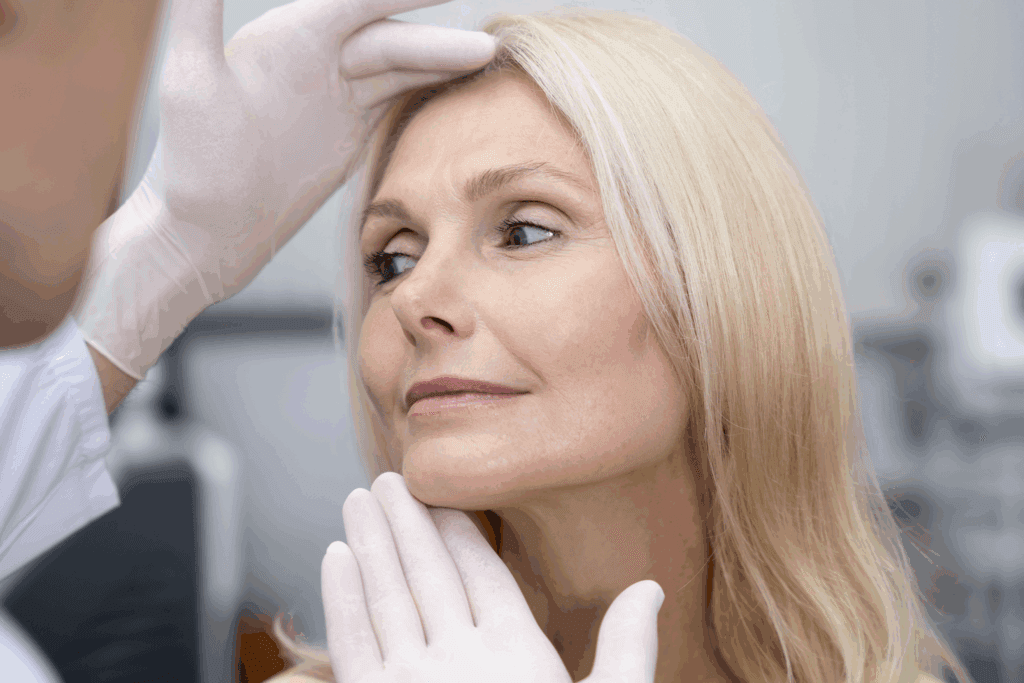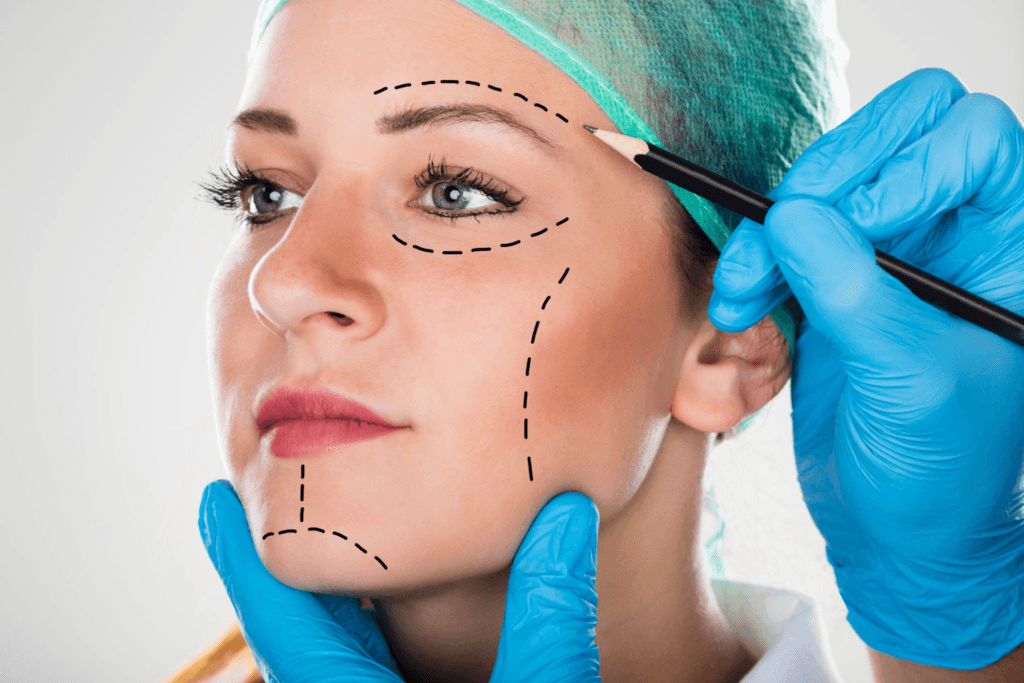Considering a facelift abroad but confused about the differences between traditional facelifts Ve minimally invasive procedures? You’re not alone. With the rise of tıbbi turizm, patients now have more options than ever—but not all facelifts are created equal. This comprehensive guide breaks down the key differences between traditional and minimally invasive facelifts, including procedure details, recovery timelines, costs, risks, and results, so you can make an informed decision based on your goals, budget, and lifestyle. By the end, you’ll know exactly which procedure aligns with your needs and how to choose the best clinic abroad for optimal results.
İçindekiler
Understanding Facelift Procedures: An Overview
Facelifts are designed to reverse signs of aging by tightening sagging skin, reducing wrinkles, and restoring a youthful contour. However, the technique, invasiveness, and results vary significantly between traditional and minimally invasive options. Here’s a high-level comparison:
| Özellik | Traditional Facelift | Minimally Invasive Facelift |
|—————————|————————————————–|———————————————–|
| Invasiveness | High (large incisions, deeper tissue manipulation) | Low (small incisions, superficial adjustments) |
| Downtime | 3-4 weeks | 1-7 days |
| Results Duration | 10-15 years | 2-5 years |
| Cost Abroad | $5,000 – $15,000 | $2,000 – $7,000 |
| Best For | Significant sagging, deep wrinkles, jawline definition | Mild to moderate sagging, early signs of aging |
| Anestezi | General anesthesia | Local anesthesia with sedation |
| Yara izi | Hidden but more extensive | Minimal, nearly invisible |
| Recovery Pain | Moderate to high | Mild to moderate |

Traditional Facelift: The Gold Standard for Dramatic Results
What Is a Traditional Facelift?
A traditional facelift, also known as a ritidektomi, is a surgical procedure that addresses moderate to severe signs of aging by:
- Tightening the underlying muscles (SMAS layer).
- Removing excess skin and redistributing fat.
- Redefining the jawline and neck for a sculpted appearance.
Types of Traditional Facelifts
- SMAS Yüz Germe
- What it does: Lifts the superficial musculoaponeurotic system (SMAS), providing long-lasting, natural results.
- Best for: Patients with significant sagging or deep wrinkles.
- İyileşmek: 3-4 weeks.
- Derin Plan Yüz Germe
- What it does: Repositions deeper facial tissues for a more youthful, volumetric lift.
- Best for: Those seeking comprehensive rejuvenation with minimal scarring.
- İyileşmek: 4-6 weeks.
- Full Facelift with Neck Lift
- What it does: Combines a facelift with neck liposuction or platysmaplasty to address jowls and turkey neck.
- Best for: Patients with advanced aging in the face and neck.
- İyileşmek: 4 weeks.
Pros of Traditional Facelifts
✅ Long-lasting results (10-15 years).
✅ Dramatic improvement in sagging, wrinkles, and jawline definition.
✅ Customizable to address specific aging concerns.
✅ Proven technique with decades of refinement.
Cons of Traditional Facelifts
❌ Longer recovery (3-4 weeks of downtime).
❌ Higher cost (especially in Western countries).
❌ More risks (e.g., nerve damage, scarring, hematoma).
❌ Requires general anesthesia, which carries additional risks.
Ideal Candidates for Traditional Facelifts
- Age 40-70 with moderate to severe sagging.
- Good overall health (non-smokers, no uncontrolled chronic conditions).
- Realistic expectations about results and recovery.
- Willing to commit to downtime for optimal healing.

Minimally Invasive Facelifts: Quick Recovery, Subtle Results
What Are Minimally Invasive Facelifts?
Minimally invasive facelifts use smaller incisions, less tissue manipulation, and advanced technologies to provide subtle yet noticeable rejuvenation with minimal downtime. These procedures are ideal for patients with early signs of aging or those unwilling to undergo major surgery.
Types of Minimally Invasive Facelifts
- Thread Lift (Non-Surgical)
- What it does: Uses dissolvable threads to lift and tighten sagging skin.
- Best for: Mild sagging, quick lunch-time procedure.
- İyileşmek: 1-3 days.
- Results duration: 1-2 years.
- Mini Facelift (S-Lift, Short Scar Facelift)
- What it does: Targets the lower face and jawline with shorter incisions.
- Best for: Patients with early jowling or mild sagging.
- İyileşmek: 1-2 weeks.
- Results duration: 5-7 years.
- Liquid Facelift (Non-Surgical)
- What it does: Uses dermal fillers and Botox to restore volume and smooth wrinkles.
- Best for: Those seeking no downtime and subtle enhancements.
- İyileşmek: None.
- Results duration: 6-18 months.
- Laser or Ultherapy Facelift
- What it does: Uses energy-based devices (e.g., ultrasound, radiofrequency) to stimulate collagen.
- Best for: Skin tightening without surgery.
- İyileşmek: 1-3 days (redness, swelling).
- Results duration: 1-2 years.
Pros of Minimally Invasive Facelifts
✅ Minimum kesinti süresi (return to work in 1-7 days).
✅ Lower cost (often 30-50% cheaper than traditional facelifts).
✅ Less risk of complications (e.g., scarring, nerve damage).
✅ Natural, subtle results (ideal for early aging signs).
✅ Can be combined with other non-surgical treatments (e.g., fillers, Botox).
Cons of Minimally Invasive Facelifts
❌ Shorter-lasting results (typically 1-5 years).
❌ Less dramatic improvement for advanced sagging.
❌ Multiple sessions may be needed for optimal results.
❌ Not suitable for severe skin laxity or deep wrinkles.
Ideal Candidates for Minimally Invasive Facelifts
- Age 30-50 with mild to moderate sagging.
- Busy lifestyle (cannot afford long downtime).
- Prefer subtle, natural enhancements.
- Not ready for surgery but want to address early aging signs.

Comparing Traditional and Minimally Invasive Facelifts Abroad
1. Cost Comparison
| Prosedür | Cost in the U.S. | Cost Abroad (Popular Destinations) | Tasarruflar |
|—————————–|———————-|—————————————-|—————————|
| Traditional Facelift | $12,000 – $25,000 | $5,000 – $12,000 (Turkey, Mexico, Thailand) | 50-70% |
| SMAS Yüz Germe | $15,000 – $30,000 | $6,000 – $15,000 (South Korea, Germany) | 50-60% |
| Mini Yüz Germe | $6,000 – $12,000 | $2,500 – $7,000 (Mexico, Poland) | 50-70% |
| Thread Lift | $2,000 – $5,000 | $1,000 – $3,000 (Thailand, Colombia) | 40-60% |
| Liquid Facelift | $1,500 – $4,000 | $800 – $2,500 (Turkey, India) | 40-60% |
| Ultherapy/Laser Facelift | $1,500 – $3,500 | $800 – $2,000 (South Korea, Brazil) | 30-50% |
Key Takeaway: Opting for a facelift abroad can save 30-70% compared to U.S. or European prices, but verify clinic accreditations (e.g., JCI, ISAPS) to ensure safety.
2. Recovery and Downtime
| Prosedür | Downtime | İşe Dönüş | Full Recovery |
|—————————–|—————————-|————————–|—————————-|
| Traditional Facelift | 3-4 weeks | 2-3 weeks | 3-6 months |
| SMAS/Deep Plane Facelift | 4-6 weeks | 3-4 weeks | 6 months |
| Mini Yüz Germe | 1-2 weeks | 7-10 days | 1-2 months |
| Thread Lift | 1-3 days | 1-2 days | 1 week |
| Liquid Facelift | None | Immediately | None |
| Laser/Ultherapy Facelift | 1-3 days | 1-2 days | 1 week |
Key Takeaway: Minimally invasive procedures offer faster recovery, making them ideal for patients with limited downtime. Traditional facelifts require more patience but deliver longer-lasting results.
3. Results and Longevity
| Prosedür | Results Duration | Best For | Maintenance Needed? |
|—————————–|———————-|—————————————|——————————–|
| Traditional Facelift | 10-15 years | Severe sagging, deep wrinkles | Occasional touch-ups (fillers, laser) |
| SMAS/Deep Plane Facelift | 10-15 years | Comprehensive rejuvenation | Minimal |
| Mini Yüz Germe | 5-7 years | Mild to moderate sagging | Possible touch-ups after 5 years |
| Thread Lift | 1-2 years | Mild sagging, quick fix | Repeat procedure every 1-2 years |
| Liquid Facelift | 6-18 months | Volume loss, fine lines | Repeat every 6-12 months |
| Laser/Ultherapy Facelift | 1-2 years | Skin tightening, collagen stimulation | Repeat every 1-2 years |
Key Takeaway: Traditional facelifts offer decade-long results, while minimally invasive options require more frequent maintenance but provide subtle, natural enhancements.
4. Risks and Complications
| Prosedür | Yaygın Riskler | Severity |
|—————————–|———————————————————————————|—————————-|
| Traditional Facelift | Hematoma, nerve damage, scarring, infection, anesthesia risks | Moderate to high |
| SMAS/Deep Plane Facelift | Prolonged swelling, asymmetry, rare nerve injury | Moderate |
| Mini Yüz Germe | Minor swelling, bruising, temporary numbness | Low to moderate |
| Thread Lift | Thread migration, visible threads, minor bruising | Low |
| Liquid Facelift | Bruising, lumpiness, allergic reactions | Low |
| Laser/Ultherapy Facelift | Redness, swelling, temporary discomfort | Low |
Key Takeaway: Traditional facelifts carry higher risks due to their invasive nature, while minimally invasive procedures have fewer complications but may require repeat treatments.
5. Anesthesia and Pain Management
| Prosedür | Anesthesia Type | Pain Level | Ağrı Yönetimi |
|—————————–|—————————|—————————|——————————————|
| Traditional Facelift | General anesthesia | Moderate to high | Prescription painkillers, cold compresses |
| SMAS/Deep Plane Facelift | General anesthesia | Moderate to high | Strong painkillers, anti-inflammatories |
| Mini Yüz Germe | Local + sedation | Mild to moderate | Over-the-counter painkillers |
| Thread Lift | Local anesthesia | Mild | Ice packs, mild painkillers |
| Liquid Facelift | None or topical numbing | Minimal | None needed |
| Laser/Ultherapy Facelift | Topical numbing | Mild | Cooling gels, mild painkillers |
Key Takeaway: Traditional facelifts involve more pain and anesthesia risks, while minimally invasive options are less painful and require minimal anesthesia.

How to Choose Between Traditional and Minimally Invasive Facelifts Abroad
1. Assess Your Aging Concerns
- Severe sagging, deep wrinkles, or jowls? → Traditional or SMAS facelift
- Mild sagging or early signs of aging? → Mini facelift or thread lift
- Volume loss or fine lines? → Liquid facelift or laser treatment
2. Consider Your Budget
- Traditional facelifts cost more upfront but last 10+ years.
- Minimally invasive options are cheaper but require more frequent touch-ups.
3. Evaluate Downtime and Lifestyle
- Can’t afford 3-4 weeks off? → Mini facelift or thread lift
- Willing to take time off for long-term results? → Traditional facelift
4. Research Clinics and Surgeons
- For traditional facelifts: Choose JCI-accredited hospitals with ISAPS-certified surgeons.
- For minimally invasive procedures: Look for clinics specializing in non-surgical rejuvenation with before-and-after portfolios.
5. Verify Safety Standards
- Ensure the clinic follows international safety protocols (e.g., sterile ORs, emergency plans).
- Check for anesthesiologist credentials (especially for traditional facelifts).
6. Plan for Follow-Up Care
- Traditional facelifts may require in-person follow-ups (consider staying abroad for 2-4 weeks).
- Minimally invasive procedures often need less post-op care (virtual follow-ups may suffice).
Popular Destinations for Facelifts Abroad
1. South Korea
- Why? The global leader in advanced facelift techniques, especially SMAS and deep plane facelifts.
- Ortalama Maliyet: $6,000 – $15,000 (traditional), $2,000 – $5,000 (minimally invasive).
- Top Clinics: ID Hospital, Banobagi Clinic, Lien Clinic.
- Certifications to Check: KSPRS (Korean Society of Plastic Surgeons), JCI.
2. Turkey
- Why? Affordable prices Ve highly skilled surgeons, especially in Istanbul.
- Ortalama Maliyet: $4,000 – $10,000 (traditional), $1,500 – $4,000 (minimally invasive).
- Top Clinics: Estetik International, Clinica International, Dr. Serkan Aygin Clinic.
- Certifications to Check: TPRCD (Turkish Plastic Surgery Association), ISO.
3. Thailand
- Why? World-class hospitals with Western-trained surgeons at lower costs.
- Ortalama Maliyet: $5,000 – $12,000 (traditional), $1,500 – $4,000 (minimally invasive).
- Top Clinics: Bumrungrad Hospital, Bangkok Hospital, Yanhee Hospital.
- Certifications to Check: JCI, Thai Board of Plastic Surgery.
4. Mexico
- Why? Proximity to the U.S. Ve competitive pricing with high standards.
- Ortalama Maliyet: $5,000 – $12,000 (traditional), $2,000 – $5,000 (minimally invasive).
- Top Clinics: Hospital Angeles Tijuana, Cosmetic Surgery Institute, Transformations Plastic Surgery.
- Certifications to Check: AMCPER (Mexican Board of Plastic Surgery), JCI.
5. Colombia
- Why? Expertise in facial procedures Ve affordable luxury clinics.
- Ortalama Maliyet: $4,500 – $10,000 (traditional), $1,800 – $4,500 (minimally invasive).
- Top Clinics: Cirugia Plastica Bogota, Clínica de Cirugía Plástica Dr. Jorge Cortadellas.
- Certifications to Check: SCCP (Colombian Society of Plastic Surgery).
How to Prepare for a Facelift Abroad
1. Research and Verify Credentials
- Surgeon: Check ISAPS or local board certification.
- Clinic: Ensure JCI or equivalent accreditation.
- Reviews: Read RealSelf, Google, and clinic testimonials.
2. Schedule a Virtual Consultation
- Discuss your goals, medical history, and expected results.
- Ask for before-and-after photos of similar patients.
3. Plan Your Trip Logistics
- Visa Requirements: Check if you need a medical tourism visa.
- Travel Insurance: Get medical tourism insurance covering complications.
- Recovery Stay: Book a hotel or recovery facility near the clinic.
4. Prepare for Recovery
- Pack essentials: Compression garments, prescribed medications, scar creams.
- Arrange post-op care: Virtual follow-ups or local doctor coordination.
5. Understand the Risks
- Traditional facelifts: Higher risk of nerve damage, scarring, or hematoma.
- Minimally invasive: Lower risk but shorter-lasting results.
Risks of Getting a Facelift Abroad
While medical tourism offers cost savings and access to skilled surgeons, it also comes with unique risks:
1. Inconsistent Medical Standards
- Some countries have less stringent regulations for cosmetic surgery.
- Solution: Choose JCI-accredited clinics with ISAPS-certified surgeons.
2. Communication Barriers
- Misunderstandings about procedure details, risks, or aftercare.
- Solution: Work with clinics offering English-speaking staff and translators.
3. Limited Legal Recourse
- Difficulty suing for malpractice if complications arise.
- Solution: Ensure the clinic has malpractice insurance covering international patients.
4. Travel-Related Complications
- Blood clots or infections from long flights post-surgery.
- Solution: Stay in the destination for at least 1-2 weeks before flying home.
5. Follow-Up Care Challenges
- Local doctors may not be familiar with your procedure.
- Solution: Get a detailed post-op care plan from your surgeon.
Traditional vs. Minimally Invasive Facelifts: Real Patient Experiences
Case Study 1: Traditional Facelift in South Korea
- Patient: 58-year-old woman with severe jowling and neck sagging.
- Procedure: SMAS facelift + neck lift.
- Cost: $10,000 (vs. $25,000 in the U.S.).
- İyileşmek: “The first 2 weeks were tough, but the results after 6 months were life-changing. My jawline looks 20 years younger!”
- Verdict: “Worth the downtime and cost savings.”
Case Study 2: Thread Lift in Turkey
- Patient: 42-year-old woman with mild sagging.
- Procedure: PDO thread lift.
- Cost: $1,800 (vs. $4,000 in the U.S.).
- İyileşmek: “I was back to work in 2 days with minimal bruising. Results lasted about 18 months.”
- Verdict: “Great for a quick fix, but I’ll need to repeat it.”
Case Study 3: Mini Facelift in Mexico
- Patient: 50-year-old man with early jowling.
- Procedure: Short scar mini facelift.
- Cost: $4,500 (vs. $10,000 in the U.S.).
- İyileşmek: “I took 1 week off work and felt back to normal in 2 weeks. The results are natural and subtle.”
- Verdict: “Perfect balance of cost, recovery, and results.”
Çözüm
Key Takeaways
- Traditional facelifts offer dramatic, long-lasting results but require more downtime and higher costs.
- Minimally invasive facelifts provide quick recovery and lower costs but shorter-lasting results.
- Choosing abroad can save 30-70% but requires thorough research to ensure safety and quality.
- Verify surgeon certifications (ISAPS), clinic accreditations (JCI), and patient reviews before booking.
Next Steps
- Assess your aging concerns to determine if you need a traditional or minimally invasive facelift.
- Research top destinations (South Korea, Turkey, Thailand) and verify clinic credentials.
- Schedule virtual consultations with 2-3 board-certified surgeons abroad.
- Plan your trip logistics, including visa, insurance, and recovery stay.
- Prepare for post-op care with a detailed follow-up plan from your surgeon.
By understanding the differences between traditional and minimally invasive facelifts Ve choosing a reputable clinic abroad, you can achieve safe, stunning results while saving thousands of dollars. Whether you opt for a full SMAS facelift in South Korea or a thread lift in Turkey, prioritizing safety, certifications, and realistic expectations will ensure a successful and satisfying experience.
Our Surgeons and Affiliated Professionals
Surgyteam olarak, her biri zengin uzmanlık ve hasta merkezli bakıma bağlılık getiren seçkin bir tıp profesyonelleri ekibiyle işbirliği yapmaktan gurur duyuyoruz.
- Dr. Mehmet Fatih Okyay (Dr. MFO): Plastik, Rekonstrüktif ve Estetik Cerrahi Uzmanı. Surgyteam'in kurucu ortağı. FEBOPRAS sertifikalı.https://www.dr-mfo.com/)
- Dr. Selçuk Yılmaz: Plastik, Rekonstrüktif ve Estetik Cerrahi Uzmanı.https://drselcukyilmaz.com)
- Dr. Ebru Okyay: Dermatoloji Uzmanı. (https://drebruokyay.com/)
- Dr. Mustafa Keleş: Estetik, Plastik ve Rekonstrüktif Cerrahi Uzmanı.https://www.medstar.com.tr/doktorlar/mustafa-keles/)
- Dr. Boray Yücel: Plastik, Rekonstrüktif ve Estetik Cerrahi Uzmanı.https://borayucel.com/)
- Dr. Sibel Atalay: Plastik, Rekonstrüktif ve Estetik Cerrahi Uzmanı. Uluslararası Sağlık Turizmi Yetki Belgesine Sahip Klinik.https://www.sibelatalay.com.tr/)
- Dr. Mert Meral: Plastik, Rekonstrüktif ve Estetik Cerrahi Uzmanı. EBOPRAS sertifikalı.https://mertmeral.com/)
Surgyteam hakkında daha fazla bilgi edinmek ve size nasıl yardımcı olabileceğimizi öğrenmek için lütfen web sitemizi ziyaret edin:
https://surgyteam.com/
Yasal Uyarı: Bu blog yazısı yalnızca bilgilendirme amaçlıdır ve tıbbi tavsiye teşkil etmez. Maliyetler tahminidir ve değişiklik gösterebilir. Kişiselleştirilmiş tavsiye ve tedavi için daima kalifiye bir sağlık uzmanına danışın.



